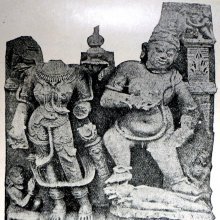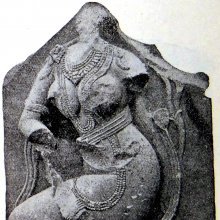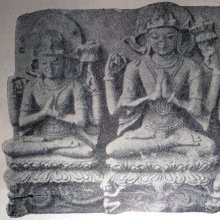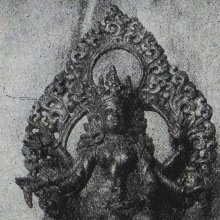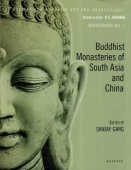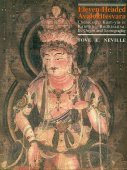Sarnath, Sārnāth: 1 definition
Introduction:
Sarnath means something in the history of ancient India. If you want to know the exact meaning, history, etymology or English translation of this term then check out the descriptions on this page. Add your comment or reference to a book if you want to contribute to this summary article.
Images (photo gallery)
(+28 more images available)
India history and geography
Source: Shodhganga: New look on the kushan bengaliSarnath, an important Buddhist centre, also flourished as a town under the Kushan rule. From here was discovered the Sarnath inscription of King Kanishka, dated in the year 3 of his rule. Other important discoveries are the monastic remains belonging to Kushan period and copper coins of Huvishka (IAR 1919-20).

The history of India traces the identification of countries, villages, towns and other regions of India, as well as mythology, zoology, royal dynasties, rulers, tribes, local festivities and traditions and regional languages. Ancient India enjoyed religious freedom and encourages the path of Dharma, a concept common to Buddhism, Hinduism, and Jainism.
See also (Relevant definitions)
Full-text (+5): Simhapuri, Dhamma Day, Dharmarajika, Asalha Puja, Kashi, Vishnudri, Vishnudeva, Vishnu, Isipatana, Simhapura, Dharmacakra, Gupta, Bodh Gaya, Vishaya, Marakaranda, Kushan, Vebhalinga, Verudinga, Shreyamsanatha, Stupa.
Relevant text
Search found 44 books and stories containing Sarnath, Sārnāth; (plurals include: Sarnaths, Sārnāths). You can also click to the full overview containing English textual excerpts. Below are direct links for the most relevant articles:
Settlement in Early Historic Ganga Plain (by Chirantani Das)
Part 3 - Lithic industry of the Vārāṇasī region < [Chapter VI - Vārāṇasī: Emergence of the Urban Centre and Seat of Administration]
Part 3 - Related works on our settlement zones < [Introduction]
Part 7 - The Buddha’s life and legend represented in Sārnāth art < [Chapter VII - Sārnāth: The Satellite Religious Centre]
The Indian Buddhist Iconography (by Benoytosh Bhattachacharyya)
Figure 130 - Emanations of Akṣobhya: Ucchuṣma-Jambhala
Figure 94-98 - (Avalokiteśvara): Ṣaḍakṣarī-Lokeśvara
Anāgārika Dharmapāla (by Bhikkhu Sangharakshita)
Vietnamese Buddhist Art (by Nguyen Ngoc Vinh)
4. Thailand Sculptures (b): Dvaravati Period (Non-Indian) < [Chapter 4 - The Sculpture and its Reciprocal Influence]
1. The evolution of Buddhist Art (Introduction) < [Chapter 1 - The evolution of Buddhist Art in South Vietnam and South East Asia]
Stupas in Orissa (Study) (by Meenakshi Chauley)
Stupa at Sarnath < [Chapter 3]
Stupas at the Upper Indus Valley region < [Chapter 3]
Stupa at Nagarjunakonda < [Chapter 3]
The Buddha (by Piyadassi Thera)
Related products
